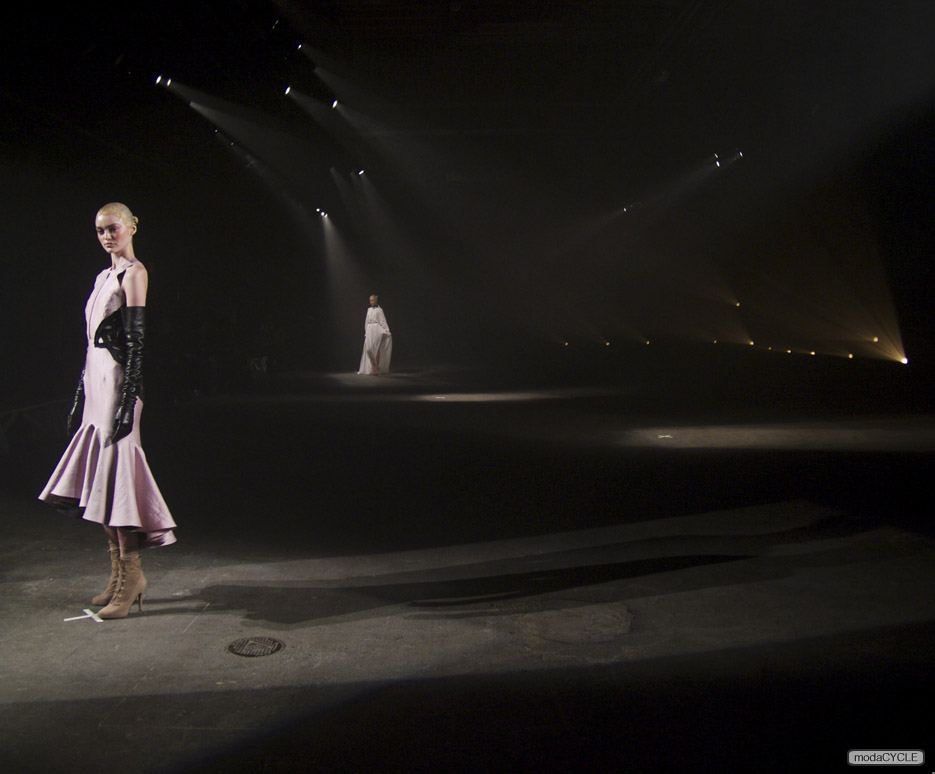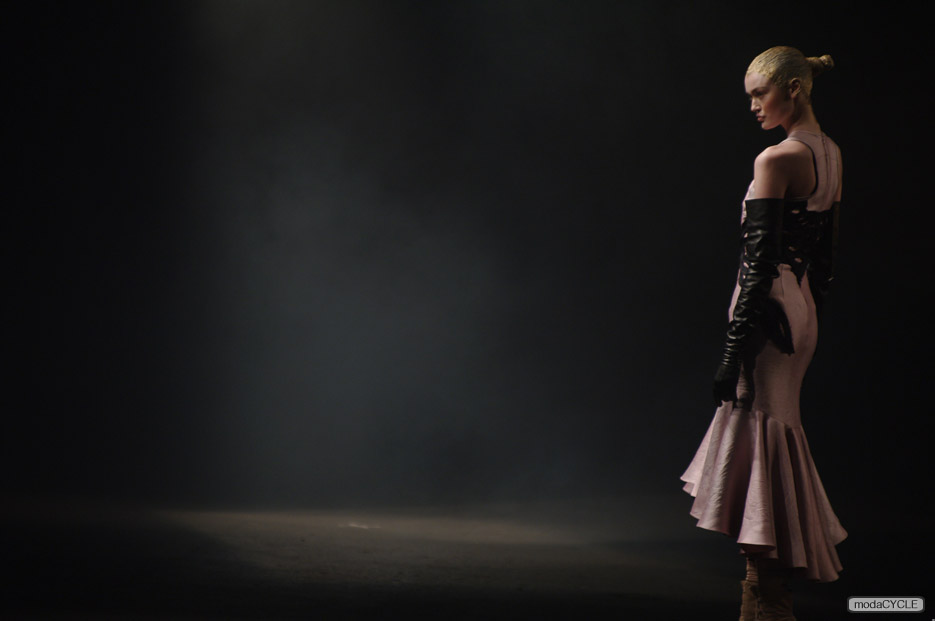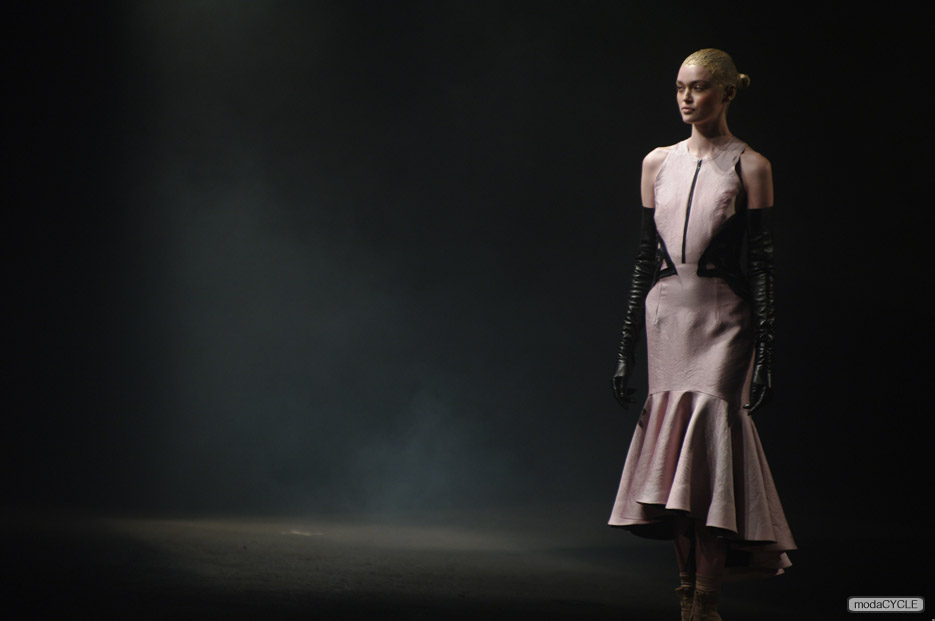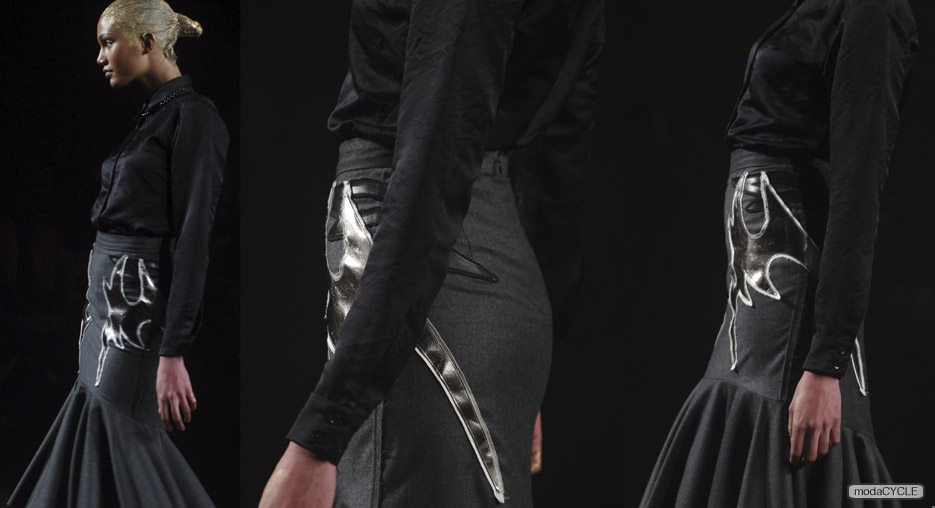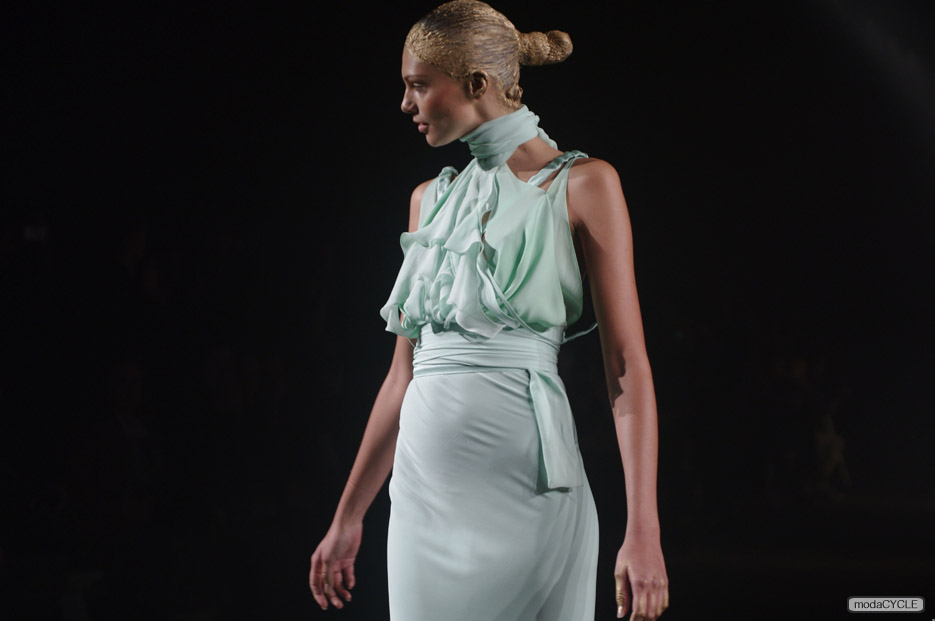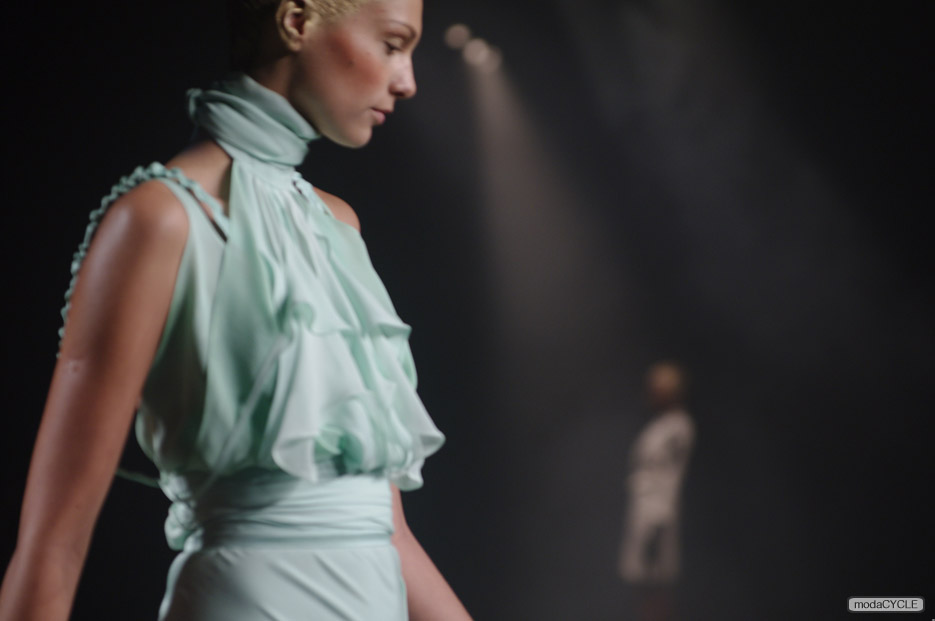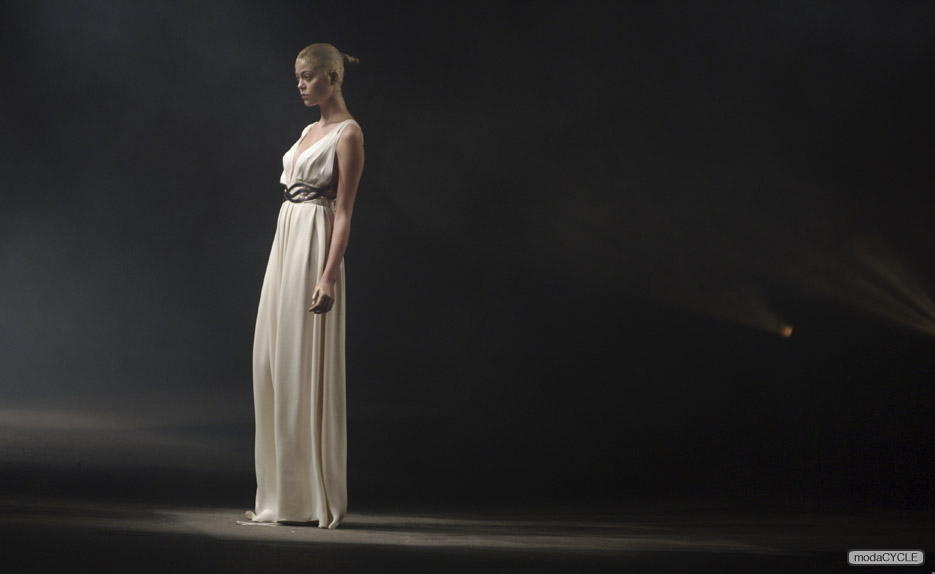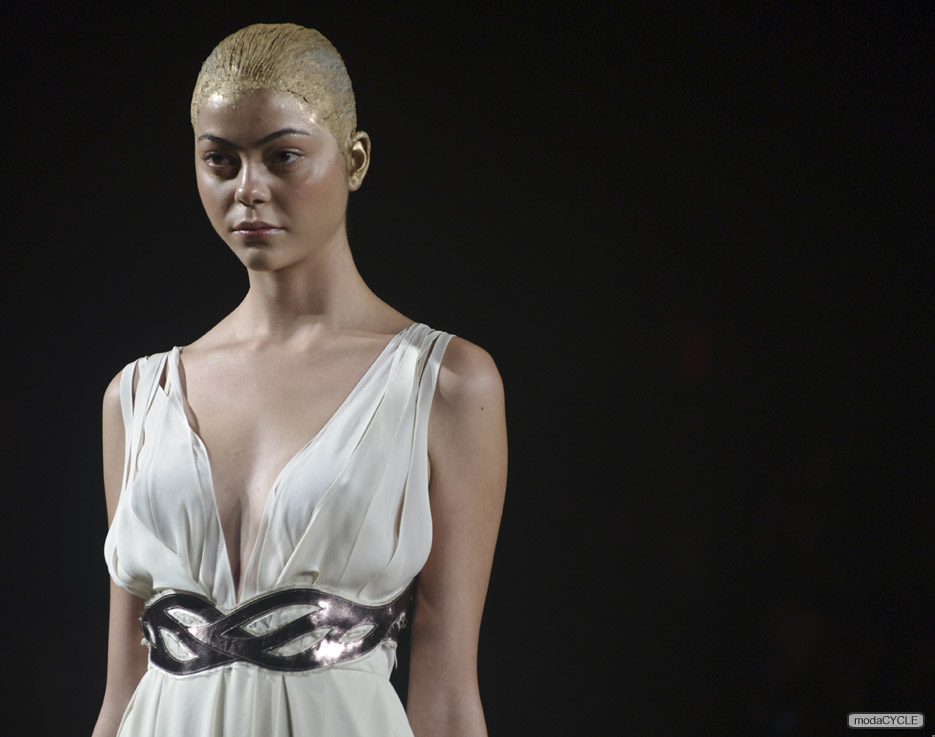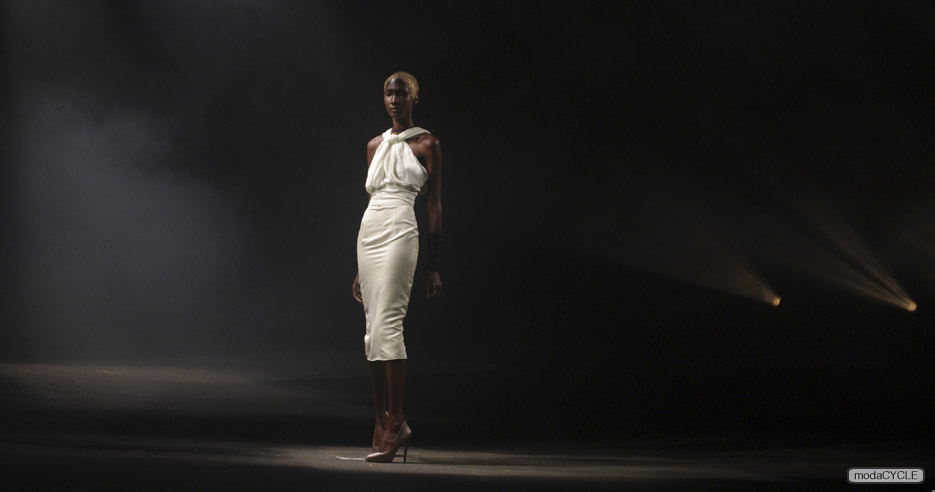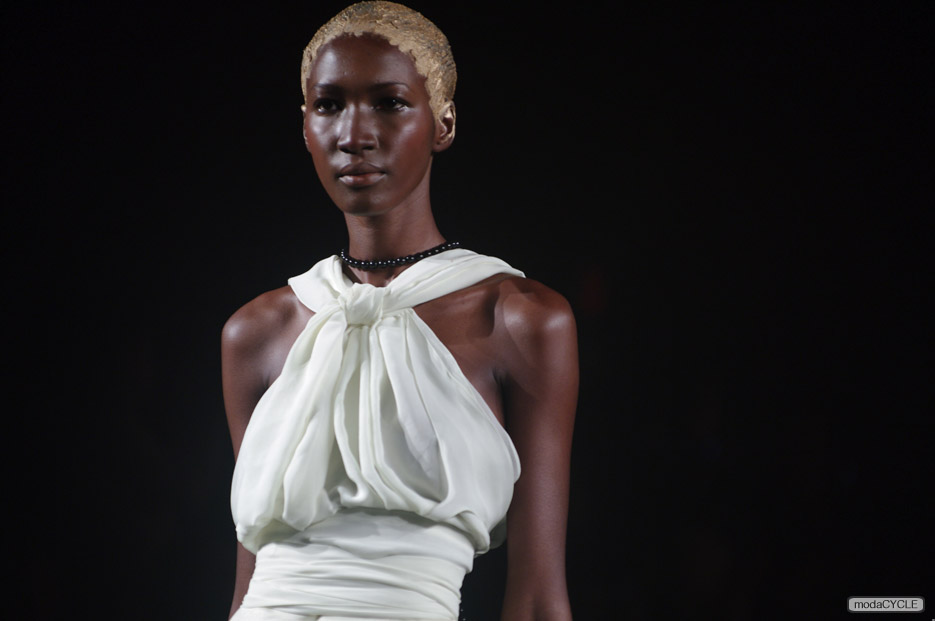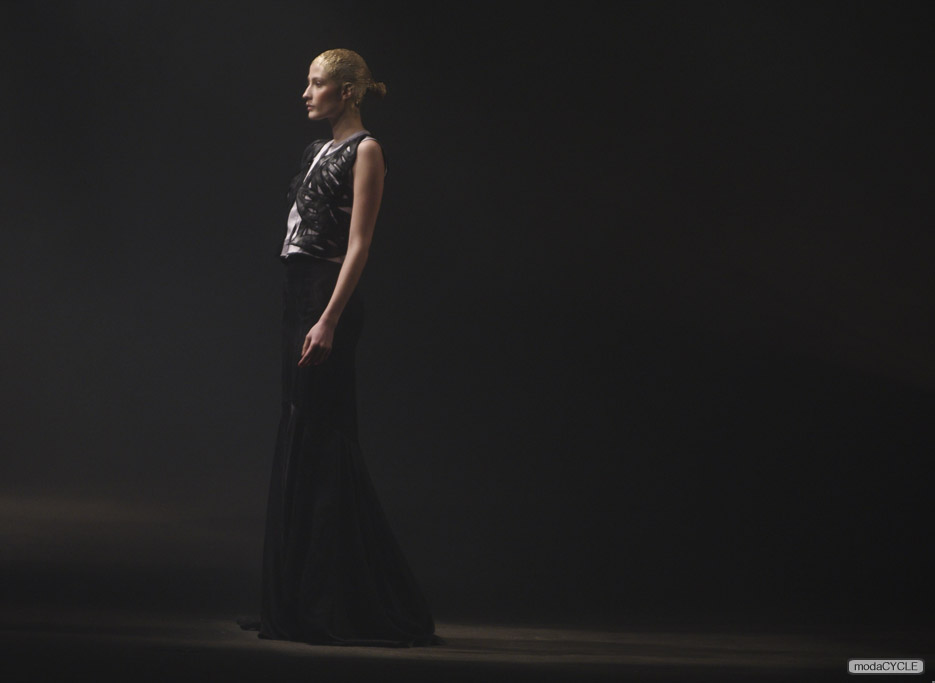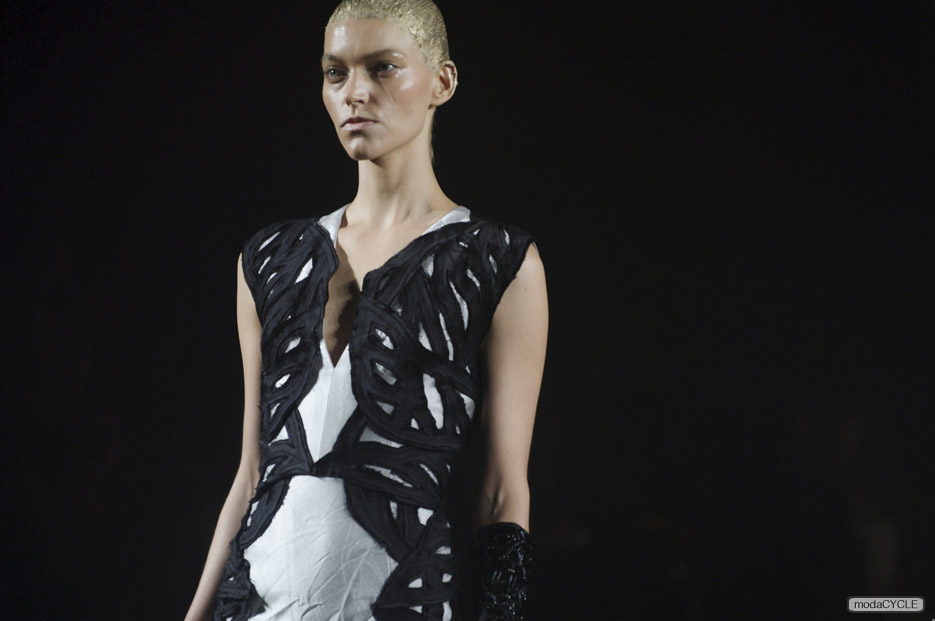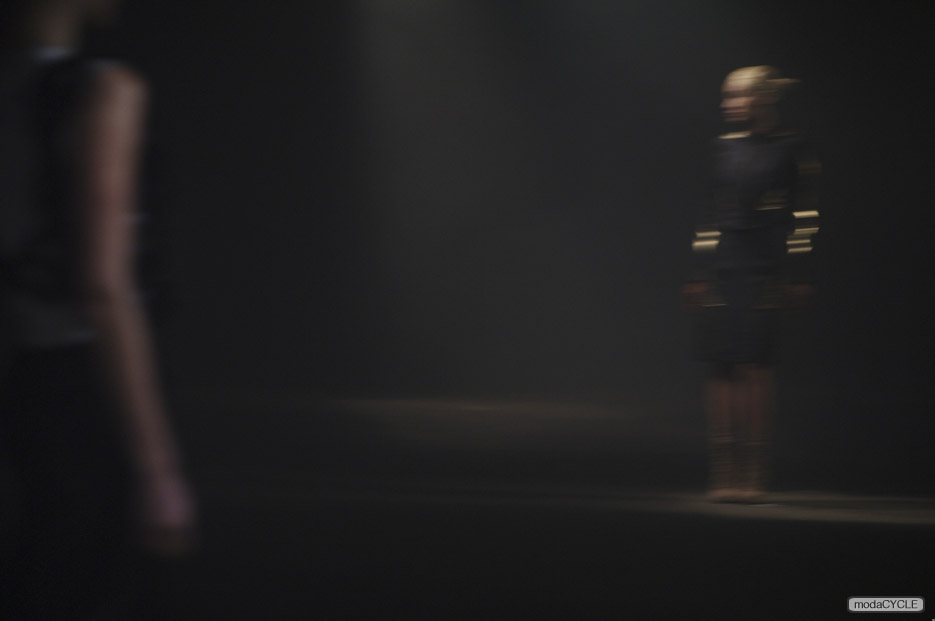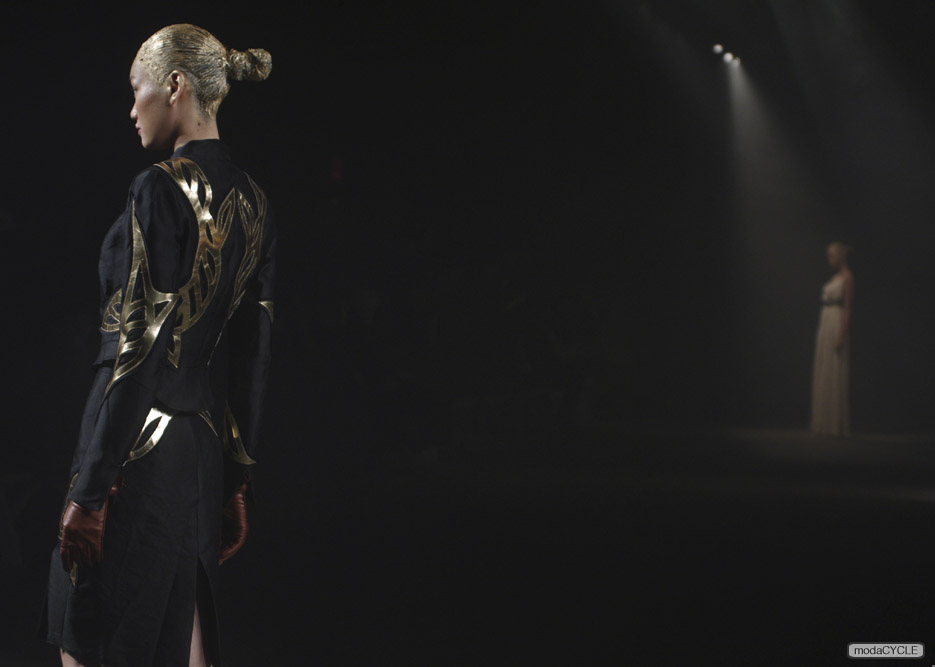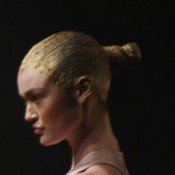story by Kari Jensen
photos by Charles Beckwith
A long bench along one side of an ominous warehouse faced the emptiness. A row of lights, spaced wide overhead, cutting through the gloom, punctuated by thunderous drum calls. Models passed one-by-one walking first near the bench and then circling into the murk, repeating this pattern again and again during Juan Carlos Obando’s two-hour Fall 2011 presentation.
The dark setting directly contrasted with Obando’s suits, dresses, and gowns; their lightweight fabrics and body-revealing cuts more commonly seen in spring and summer. As one model walked, her floor-length white caftan fluttered like a sail in the breeze. Another model appeared ready to dance flamenco in a pale pink sleeveless below-knee dress with ruffle-bottomed skirt, trimmed with black lace triangles at its waist’s sides and worn with above-elbow black gloves. Whether it be a black, collarless suit with tight, straight skirt, appliquéd with gold; another simple black suit with a pleated front, peplum jacket; or a white halter evening gown, Obando’s ensembles fit each model impeccably, reflective of his start disassembling vintage clothes and piecing them back together. The Columbia-born designer showed his first collection in New York in 2008. Past collections have been feminine with an edge: new variations of straight and trumpet skirts; flounced jackets; vertical ruffled bodice, fitted waist dresses; and gowns with short trains. Obando said this time around his hues reflected nostalgia. “Victorian dresses have captivated me for a very long time.”
